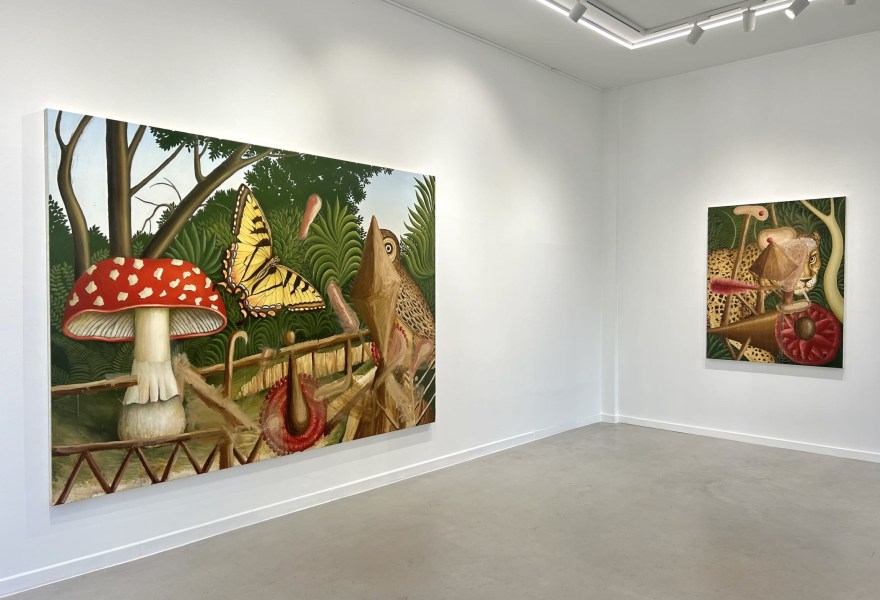04 march 2025, Flor Linckens
Siro Cugusi: a painterly escape from reality
Until 29 March, Valerius Gallery in Luxembourg City presents a solo exhibition that delves into the poetic and mysterious universe of Italian artist Siro Cugusi. His work moves within the twilight zone between dream and reality, where the figurative and the abstract meet. Cugusi’s oil paintings evoke utopian landscapes that seem unbound by earthly laws: geometric structures and human and animal forms overlap, botanical elements float in intangible spaces, and perspectives shift as if gravity momentarily loosens its grip.
Cugusi creates non-existent, parallel threshold spaces that seem to clash with conventional logic. His paintings appear to exist just beyond our comprehension, as if they only emerge in the periphery of our consciousness. This elicits an uncanny sense of estrangement, yet also one of wonder. The exhibition title, 'All Things Great, Small, Invisible', reflects the way in which Cugusi brings together the vast and the minute, the tangible and the unseen.
His work exudes a deep connection to the surreal and the metaphysical — that which lies beyond the physical, tangible world and explores the fundamental nature of reality, existence and perception. In art history, the metaphysical is most often associated with Pittura Metafisica, the early 20th-century movement pioneered by Giorgio de Chirico.
Cugusi’s painting balances between past and present. While his technique and visual language recall classical traditions from surrealism and the early Renaissance, he merges them with a contemporary, intuitive approach that is more associative than narrative. This results in a painterly space where elements unfold like memories: fragmentary, poetic and without a fixed structure. His works raise profound philosophical and existential questions: What do we truly see? And how do unseen forces shape our perception of reality?
Cugusi’s symbolically layered compositions seem infused with hidden meanings — messages that do not immediately reveal themselves. Motifs such as spirals, crystals, plants and animals reference the cosmic interconnectedness of all things, suggesting a world in which the microcosmic and the macrocosmic continuously reflect one another. His recent work plays with the idea of the garden as a symbolic space. From the Garden of Eden to a Japanese Zen garden, gardens have long been places of contemplation, transformation, fertility and discovery. These environments, filled with flowers, mushrooms, faceted pyramids, owls, and fruit split open to reveal deep red interiors, appear in Cugusi’s paintings as realms both familiar and elusive — like fragments of a forgotten myth or a dream that remains just beyond reach. His paintings function as meditative spaces, inviting the viewer to momentarily lose themselves and step away from rational thought.
Cugusi typically works without a fixed plan; his paintings emerge from sketches, photographs and notes, drawing on intuition and the subconscious. Rather than serving as detailed preparatory studies, his drawings act as initial impulses that further evolve on the canvas. His process is one of continuous experimentation and refinement, utilising the properties of paint to construct layered compositions. Through the application, removal and reworking of paint, structures emerge that undergo not only a visual but also a material transformation — an almost alchemical process in which instinct and emotion take precedence. His colour palette, where warm earth tones and deep greens contrast with vivid accents, enhances the illusion of a timeless and mythical world.
Siro Cugusi was born on Sardinia in 1980. He studied painting at the Accademia di Belle Arti in Sassari before moving to Paris. Today, the Sardinian painter once again lives and works on his home island. Last year, his work was featured in a solo exhibition at Museo Nivola in Orani and it has previously been exhibited in galleries in Los Angeles, London, Copenhagen, Madrid, New York, Naples and Munich.



